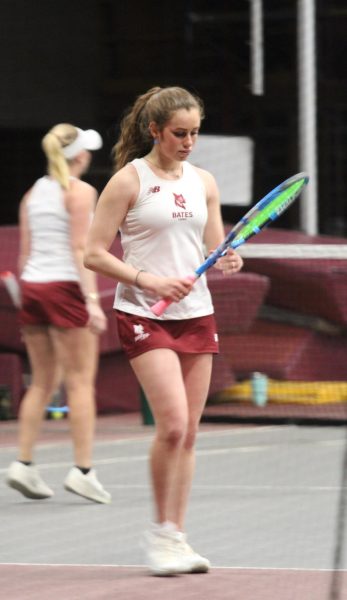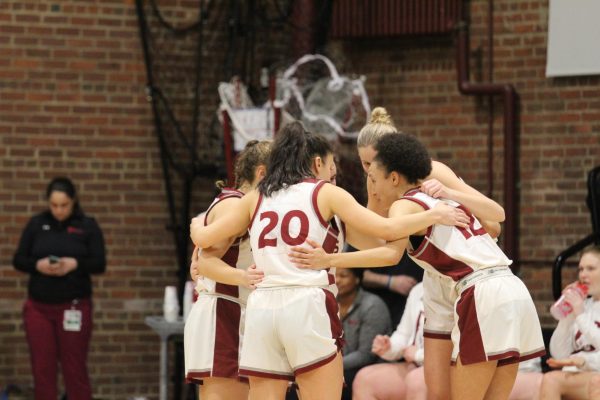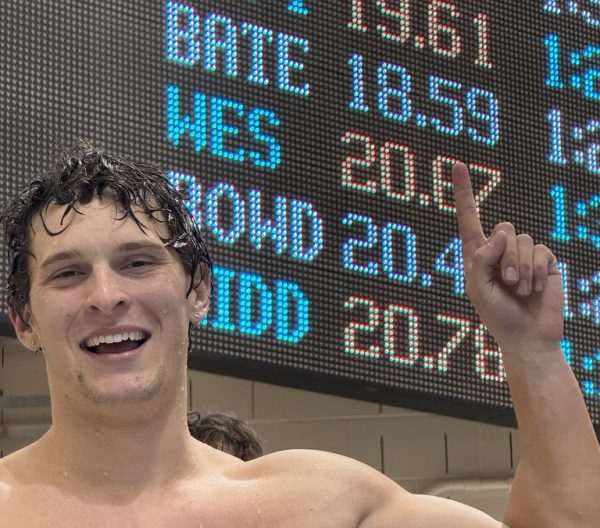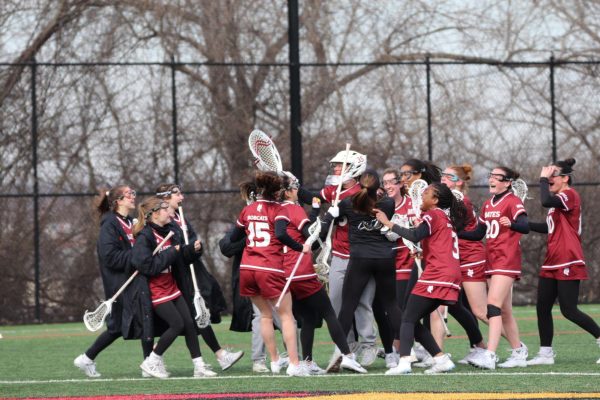Sports Medicine Adjusts to New COVID-19 Protocols
Due to the pandemic, campus life at Bates is not what it once was – this has resulted in major changes for not just social and academic life, but athletic life as well. Sports Medicine is a major facet of athletics at Bates and has also been forced to adjust to the new rules.
The Sports Medicine clinic, home to six athletic trainers dedicated to high quality care and athletic development, has traditionally been a safe haven for student-athletes battling aches, pains, and injuries. Just like all other aspects of campus life, the Sports Medicine clinic has had to adjust to new rules and regulations to protect the health and safety of students and faculty at Bates.
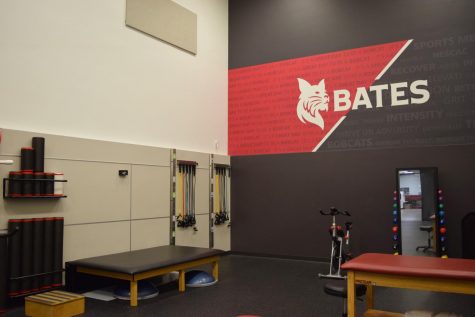
According to the information provided by the Q&A about COVID-19 protocols for athletics and recreation, the Sports Medicine clinic “will be scaling down the number of people” in order to abide by physical distancing rules, face coverings are required at all times, and the Sports Medicine staff will be “minimizing hands on contact time and modality usage where possible.”
Reducing hands-on contact prohibits trainers from performing deep tissue massages, but they are still able to offer other forms of hands-on support such as cupping, dry needling, and quick massages as the trainers see fit.
Despite these new regulations, Isabel May ’24, a member of the women’s cross country and track & field teams, said that “it doesn’t seem that the COVID regulations are affecting much in the way of PT at all.”
Athletic Trainer Catie O’Neal also believes that while the sports medicine clinic has changed, the quality of care remains the same.
“As is true with every aspect of living and working in a pandemic, much has changed,” she said. “I can say that the protocols we have in place ‒ guided by the CDC and advice from public health experts ‒ are thorough and designed to mitigate the risk of disease transmission.”
She added, “While this requires additional steps, our team is up to the task and delighted to be able to continue our work with Bates student-athletes. This phrase is my go-to and it stands, even in a pandemic: We still firmly believe every day is a great day to be a Bobcat.”
The hours of operation for the clinic are also different this year. During stages I and II of Bates’ COVID protocols, hours for appointments will be between 10 a.m. to 7 p.m., but the clinic is closed for about 30 minutes a day – usually around lunch time – to undergo “a comprehensive cleaning of all high touch areas and surfaces.”
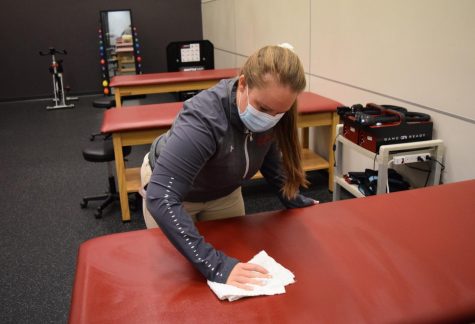
In addition to this cleaning break, a regular cleaning of surfaces and equipment is done after use occurs. Once an athlete uses a medicine ball, a resistance band, or lays on a table, the equipment or surface is always sanitized by an athletic trainer before being used by another athlete.
“Everyone’s always wearing a mask, the clinic is never crowded, and I see equipment being wiped down all the time,” May said, attesting to the safety of the clinic.
Walk-in appointments with the trainers are no longer allowed, except for emergencies. Students will need to email an athletic trainer to set-up an appointment and “show up on time for appointments and move with a purpose through your treatment for the day.”
“Obviously not everyone is always six feet apart just due to the nature of the space, but people are as spread out as possible,” said May. “I feel 100% safe because of all the precautions.”
According to the Athletic Performance Department Mission Statement, the sports medicine staff pledges to “provide the highest standard of care” for student-athletes. While the circumstances have drastically changed, it seems that the athletic trainers are doing everything they can to support Bates’s student-athletes. Although there are inconveniences that result from the health and safety policies of the clinic, athletes are still able to receive necessary physical therapy and athletic assistance.
Your donation will support the student journalists of Bates College and help us cover our annual website hosting costs.



